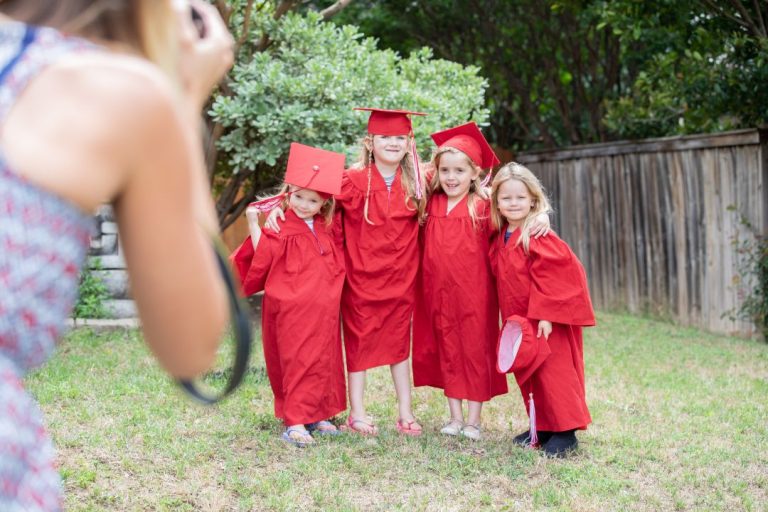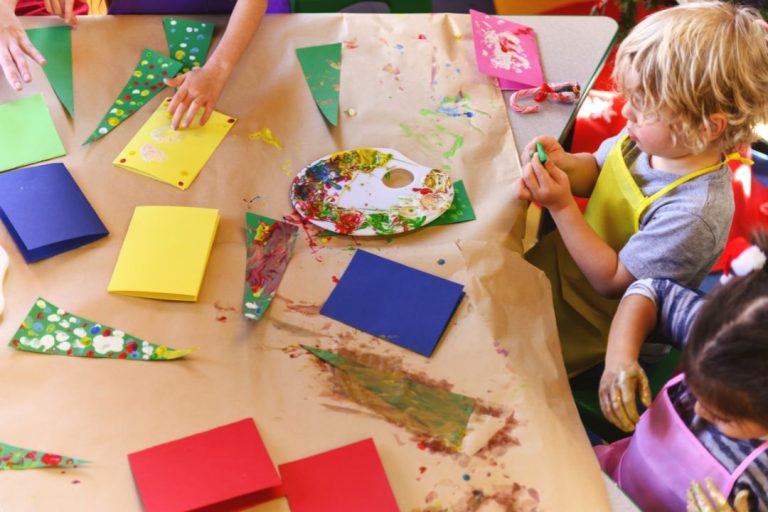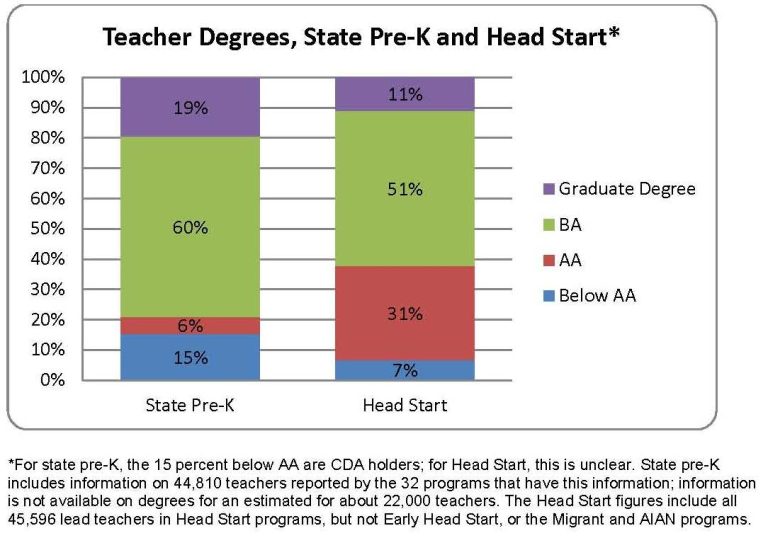How to Handle Separation Anxiety in Preschool

Handling separation anxiety in preschool requires consistency, reassurance, and gradual exposure to separations. Assure the child of your return and establish a goodbye routine to provide a sense of security.
Separation anxiety is a common experience for preschool-aged children, where they may exhibit distress when separated from their primary caregiver. This can manifest through crying, tantrums, or clinginess, making it challenging for parents and teachers. However, understanding and implementing effective strategies can help ease the transition and support the child’s emotional well-being.
We will explore practical techniques and tips on how to handle separation anxiety in preschool, offering guidance to parents and educators in fostering a smooth and positive separation process. By employing these strategies, you can help your child navigate separation anxiety with confidence and security.
Understanding Separation Anxiety In Preschool
Signs And Symptoms Of Separation Anxiety In Young Children
Separation anxiety in preschoolers can be distressing for both children and their parents. It is essential to recognize the signs and symptoms to address the issue effectively. Some common indicators of separation anxiety in young children include:
- Excessive clinginess
- Resistance to being dropped off at school or daycare
- Tantrums and crying spells during separation
- Physical complaints, such as stomachaches or headaches
- Fear of being alone
How Separation Anxiety Typically Manifests In The Preschool Environment
Separation anxiety often manifests itself in the preschool environment through specific behaviors and emotional reactions exhibited by the child. This may include:
- Refusing to join group activities
- Difficulty interacting with peers
- Hesitance to participate in classroom routines
- Inability to focus or concentrate on tasks
The Psychological Basis Of Separation Anxiety In Early Childhood
Separation anxiety in early childhood is rooted in the child’s developmental stage and attachment to caregivers. Young children may struggle with the concept of separateness and fear losing the security of their primary attachment figures. This psychological basis underlines the importance of creating a supportive and nurturing environment for preschoolers experiencing separation anxiety.
Strategies To Handle Preschool Separation Anxiety
Separation anxiety is a common concern for many preschoolers and their families. To help make the transition into daycare or preschool smoother, it is essential to employ effective strategies that can ease the anxiety and create a positive experience for both the child and the parents. Here are a few valuable strategies to consider:
Establishing A Goodbye Ritual
Establishing a goodbye ritual can provide a sense of security and comfort for the preschooler. This ritual can involve a special hug, a high-five, or a simple wave of goodbye. Consistently following this ritual at each drop-off can help the child anticipate and understand the transition, making it less daunting.
Keeping Farewells Brief And Positive
Keeping farewells brief and positive is crucial in helping a preschooler manage their separation anxiety. A lengthy and emotional goodbye can intensify their distress. It’s important to express love and positivity, but keeping the farewell concise can help the child transition more smoothly into the classroom environment.
Role Of Consistency In Easing Anxiety
The role of consistency cannot be overstated when it comes to easing preschool separation anxiety. By maintaining a consistent drop-off routine and ensuring that both parents and caregivers follow the same procedure, the child is more likely to adapt and feel secure in their new environment.
Building A Secure Attachment
Separation anxiety is a common experience for many preschoolers as they navigate their growing independence and the need for a secure attachment to their parents or caregivers. Building a secure attachment is crucial in helping children cope with separation anxiety and develop a sense of security and confidence. Here are some strategies for developing a strong parent-child relationship, fostering security and independence at home, and effectively communicating with your child about their feelings and fears.
Importance Of Developing A Strong Parent-child Relationship
A strong parent-child relationship is the foundation for helping preschoolers manage separation anxiety. When children feel a sense of security and trust in their caregivers, they are better equipped to handle periods of separation. Positive, loving interactions and consistent emotional support from parents or caregivers play a pivotal role in fostering a secure attachment.
Ways To Foster Security And Independence At Home
Creating a nurturing environment at home is essential for supporting a child’s sense of security and independence. Establishing predictable routines and providing opportunities for independent play can help preschoolers feel secure and confident in their surroundings. Encouraging autonomy in age-appropriate tasks, such as picking out clothes or helping with simple chores, can also bolster their sense of independence.
Communicating With Your Child About Their Feelings And Fears
Open and empathetic communication is key to helping preschoolers express their emotions and fears related to separation anxiety. Validating their feelings and providing reassurance can help them feel understood and supported. Encouraging children to verbalize their emotions and offering comfort when they feel anxious or worried can strengthen the parent-child bond and build trust.
Creating Comfort In Preschool Settings
Handling separation anxiety in preschool-aged children can be a challenging task for parents and teachers alike. Creating a comforting and supportive environment in preschool settings is essential to help children feel secure and at ease. By focusing on the role of preschool teachers, setting up the classroom, and providing activities that promote self-assurance and socialization, separation anxiety can be alleviated.
The Role Of Preschool Teachers In Alleviating Anxiety
Preschool teachers play a crucial role in helping children overcome separation anxiety. Building a rapport with each child, offering unconditional support, and showing empathy can make a significant difference. By creating a warm and nurturing atmosphere, teachers can help children feel more at ease.
Setting Up The Classroom To Feel Safe And Welcoming
The physical environment of the classroom plays a vital role in promoting a sense of security for preschoolers. Creating designated safe spaces, such as cozy reading corners or calming sensory areas, can offer children a retreat when feeling overwhelmed. Displaying familiar objects and personalized belongings can help kids feel a sense of connection to their surroundings.
Activities That Encourage Self-assurance And Socialization
Engaging in activities that promote self-assurance and socialization can help children feel more confident in their preschool environment. Encouraging collaborative play and group activities can help children build friendships and feel a sense of belonging. Engaging in activities that promote self-expression and emotional intelligence can also aid in alleviating anxiety.
Parent-teacher Collaboration Techniques
Handling separation anxiety in preschool children requires a collaborative effort between parents and teachers. Open communication, a unified approach, and tailored strategies are essential elements in addressing and managing anxiety in young learners.
Importance Of Open Communication Between Parents And Teachers
Open communication between parents and teachers is crucial in identifying and addressing separation anxiety in preschoolers. Regular updates on a child’s behavior and emotions at home and at school provide valuable insights that can guide the development of effective strategies. Both parents and teachers should maintain an open line of communication to share observations, concerns, and successes related to the child’s anxiety.
Working Together To Create A Unified Approach To Managing Anxiety
Collaboration between parents and teachers creates a unified approach to managing separation anxiety. By aligning their efforts, both parties can establish consistent routines, reinforce coping mechanisms, and provide a sense of security for the child. Establishing a consistent environment at school and home helps the child feel supported and understood, reducing the impact of separation anxiety.
Sharing Insights And Strategies Tailored To Individual Children
By sharing insights and strategies tailored to individual children, parents and teachers can address separation anxiety in a personalized manner. Each child may respond differently to various techniques, and by collaborating, parents and teachers can tailor their approach to suit the specific needs of the child. This personalized strategy can lead to more effective outcomes in managing separation anxiety.

Credit: www.originspreschool.org
The Transition To Daily Preschool Routine
Transitioning to a daily preschool routine can be a challenging time for both parents and preschoolers. The shift from being at home to a structured environment can often trigger separation anxiety in young children. However, with the right strategies and support, parents can help their children navigate this transition with confidence. Below are some key steps to handle separation anxiety in preschool by focusing on the transition to a daily preschool routine.
Gradual Introduction To The Preschool Environment
A gradual introduction to the preschool environment can significantly help ease separation anxiety in preschoolers. Before the official start date, consider arranging visits to the preschool with your child. This can help them become familiar with the new surroundings, meet their teachers, and interact with other children. Creating a positive association with the preschool environment can help alleviate anxiety and make the transition smoother.
Encouraging Independence And Resilience In Your Child
Encouraging independence and resilience in your child is crucial in helping them adjust to their new preschool routine. Incorporate activities at home that promote self-reliance, such as tidying up their toys or dressing themselves. By fostering their independence, children can feel more confident and empowered, which can ease their anxiety when separated from their parents.
Monitoring And Adjusting Strategies As The Child Adapts
It’s important to monitor your child’s progress and adjust strategies accordingly as they adapt to the preschool routine. Keep an open line of communication with the teachers to understand how your child is coping throughout the day. Be flexible in trying out different approaches and techniques to find what works best for your child. Continuously observing and adapting to your child’s needs is vital in ensuring a successful transition.
Supporting Emotional Growth Beyond Preschool
When it comes to supporting children dealing with separation anxiety, it’s essential to consider the long-term impact on their emotional development. Beyond the preschool years, continued support and encouragement play a crucial role in shaping a child’s ability to cope with separation anxiety and build emotional resilience. Understanding how early experiences with separation anxiety influence future development can guide parents and caregivers in fostering long-term coping strategies and emotional intelligence in children.
Continued Support For Children Dealing With Separation Anxiety
As children progress beyond preschool, it’s important to provide continued support for those dealing with separation anxiety. Parents and caregivers can create a nurturing environment where children feel safe expressing their emotions. Open communication and active listening can help children feel understood and supported in managing their anxiety. Encouraging them to engage in age-appropriate activities that promote independence and confidence can also aid in their emotional growth.
How Early Experiences With Separation Anxiety Influence Future Development
Early experiences with separation anxiety can significantly impact a child’s future development. Children who experience prolonged and unresolved separation anxiety during preschool years may carry forward insecurity and fear of abandonment into later stages of their lives. This can affect their self-esteem, relationships, and ability to manage stress. Understanding and addressing these influences early on can help mitigate potential long-term effects on a child’s emotional development.
Encouraging Long-term Coping Strategies And Emotional Intelligence
To ensure the long-term well-being of children dealing with separation anxiety, it’s important to encourage the development of coping strategies and emotional intelligence. Providing children with consistent routines, emotional validation, and problem-solving skills can empower them to navigate separation anxiety in a healthy manner. Teaching mindfulness and emotional regulation techniques can also equip children with essential tools for managing their emotions and building resilience beyond the preschool years.
Frequently Asked Questions Of How To Handle Separation Anxiety In Preschool
How Can I Help My Preschooler With Separation Anxiety?
It’s essential to reassure your child that you’ll return. Create a goodbye routine and follow through to build trust. Engage in positive activities to distract them from your departure. Stay consistent, and offer them plenty of love and support.
What Are Some Effective Ways To Prepare My Child For Preschool?
Gradually introduce your child to the preschool environment and caregivers. Discuss what to expect, and encourage independence in simple tasks. Validate their emotions and provide reassurance. Stay positive, and maintain supportive communication throughout the transition.
Is Separation Anxiety In Preschool Common And When Does It Typically Occur?
Separation anxiety is a natural part of child development, often peaking between 10-18 months and again around 3 years old. It’s a normal response to a child’s growing awareness of their surroundings and attachment to caregivers. With patience and support, it often resolves over time.
What Role Does Consistency Play In Helping My Child Cope With Separation Anxiety?
Consistency in routines and responses provides a sense of security for your child. Establishing predictable goodbye rituals and maintaining them fosters reassurance and trust. Consistent communication and follow-through with your child’s needs can help alleviate their anxiety over time.
Conclusion
In helping your preschooler overcome separation anxiety, it’s important to be patient and consistent. By gradually exposing them to short periods of separation, and providing reassurance and validation of their feelings, you can help them build the confidence to cope with their emotions.
Remember, every child is unique, so find what works best for your little one. With your support and understanding, your preschooler will learn to manage their separation anxiety with time.

Emma combines her teaching experience with her writing skills to produce engaging and informative content. She covers a range of topics, from classroom management to innovative teaching techniques.






